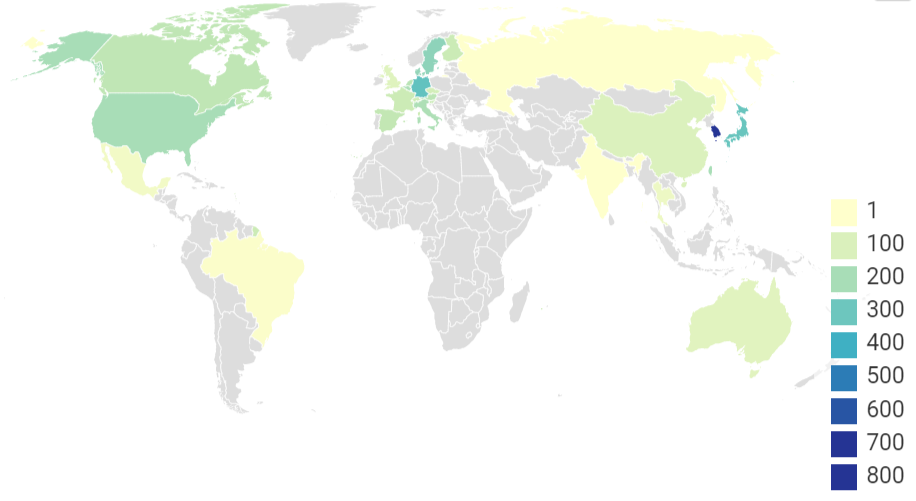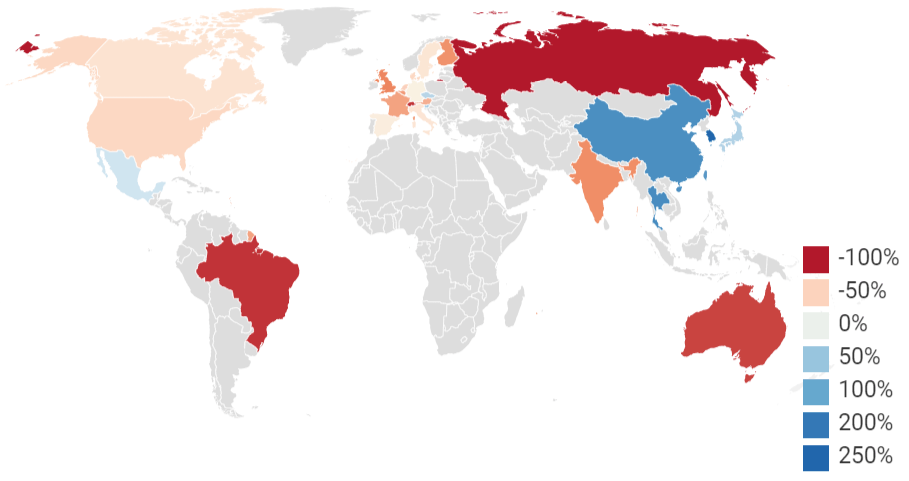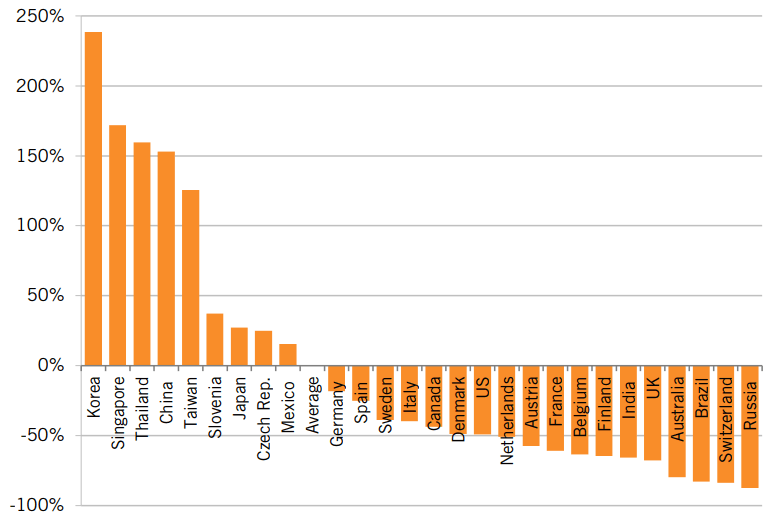IFR research: the number of industrial robots in Russia is still negligible

The number of robots per 10,000 employees in 2017. Source: ITIF
Russia again took one of the last places in the world ranking of production robotization . Each year such ratings are issued by the International Federation of Robotics (IFR) for the Information Technology and Innovation Fund (ITIF). The ranking includes the number of industrial robots per 10,000 production workers in the country.
According to information published by the IFR in the Information Technology and Innovation Fund (ITIF), the global average in 2017 was 85 robots per 10,000 employees. This is 15% more than last year.
South Korea is still the world leader, increasing to 710 robots by 10,000 workers, followed by Singapore with 658 robots and Germany with 322 robots. Russia and India close the ranking from 27 countries with indicators of 4 and 3 robots per 10,000 production workers, respectively.
')

The number of robots per 10,000 employees in 2017. Source: ITIF
However, simply counting the number of industrial robots is not the only way to measure the effectiveness of labor automation. The new report from ITIF provides another metric where the number of robots per 10,000 production workers is normalized in terms of the wages of these workers. In this case, on the top of the ranking are completely different countries. Namely, the states of Southeast Asia lead by a large margin.

The number of robots per 10,000 workers in 2017 with the normalization of the size of the population’s wages. After such a normalization, the countries of South-East Asia lead in the ranking. Source: ITIF
This is a rather interesting result, because economics assumes that the main incentive for the introduction of robots is a high level of remuneration of people-workers. The higher the level of remuneration - the greater the incentive for the introduction of robots, who are ready to work almost free of charge around the clock, do not arrange strikes and do not commit suicide.
Attracting robots to production is a costly investment, so if there are cheap people, there is little point in installing high-tech equipment. It would seem that for this reason the number of industrial robots in Russia and India is so insignificant. But this is not entirely true, that is, this is not the only reason.
After the normalization of wages, the countries of Southeast Asia are now even more dominant than before. On the top lines were South Korea and Singapore, with adoption rates of about 2.4 and 1.7 times. The adoption rate is calculated relative to the average of what one would expect based on the current average wage. Even countries like Thailand, which has only 48 industrial robots per 10,000 production workers, have a adoption rate of 159% higher than the wage levels that could be predicted.

The number of robots per 10,000 workers in 2017 with the normalization of the size of the population’s wages. Source: ITIF
On the other hand, it was found that most countries in America and Europe are introducing robots much slower than expected. The US and UK showed a adoption rate of 49% and 68% less than expected.
The reasons for such a “love” for robots in Asia and “dislike” in Europe and the United States are not entirely clear. It may be a matter of the attitude of the nation to work, respect for human rights and the power of trade unions.
The saddest thing is that even after normalization of wages, Russia ranks last in the ranking. Here, she lost even to India, but she got into a good company: the last lines according to the coefficient of “rejection” of robots with the normalization of wages of workers along with Russia are divided by the United Kingdom, Australia, Brazil and Switzerland. In fact, have you heard about a large number of robots in Switzerland? But this is a country with one of the highest wages in the world, but for some reason they are not in a hurry to introduce robots.
According to ITIF experts, “robots are key tools for improving productivity and living standards.” Initially, they were used in production, but as science and technology progressed, robots found application in many other sectors: from agriculture to logistics and hotel business.
Source: https://habr.com/ru/post/431320/
All Articles